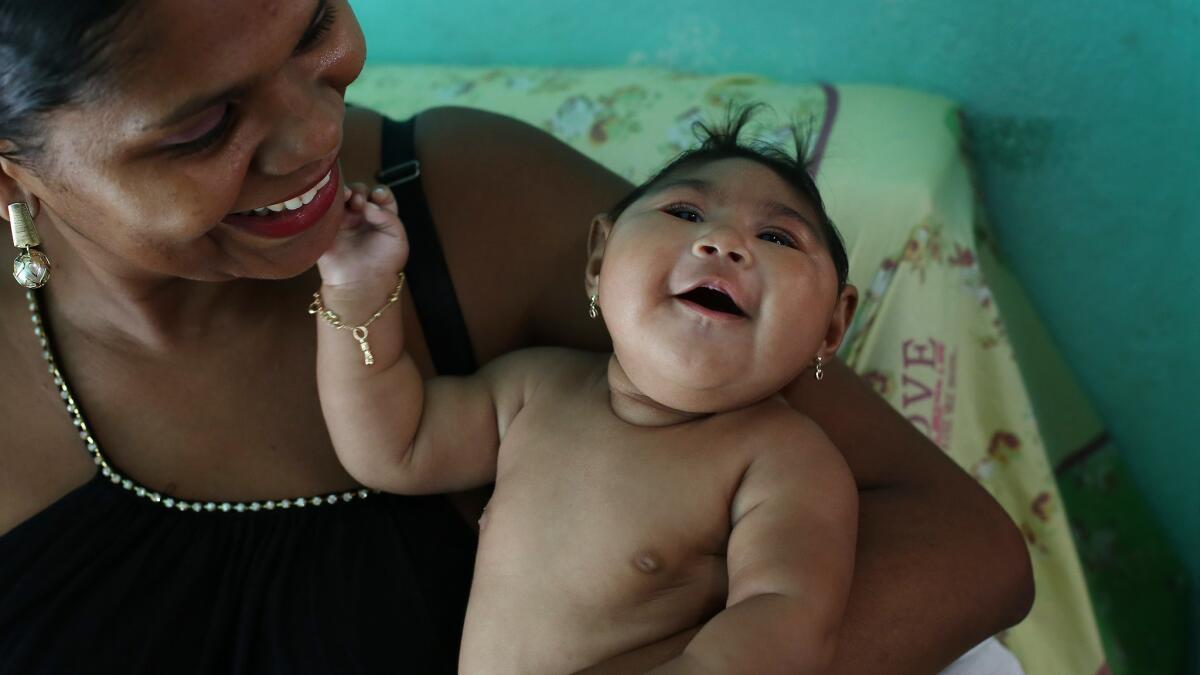Researchers strengthen link between Zika and microcephaly

A first-of-its-kind study is strengthening the case that Zika is the culprit behind Brazil’s mysterious surge in babies born with microcephaly.
Preliminary results from a study commissioned by the Brazilian Ministry of Health found that 13 out of 32 newborns with microcephaly tested positive for the Zika virus. Meanwhile, none of the 62 newborns in a comparison group who had normal-sized heads showed any sign of infection.
The findings, reported Thursday in the journal Lancet Infectious Diseases, are the first to emerge from a longer-term effort to study 200 infants with microcephaly and compare each of them with two unaffected controls from the same region who were conceived at about the same time. Given the magnitude of the health crisis posed by Zika, the team decided to report interim results of babies who joined the study between mid-January and early May.
The babies in the study were recruited from eight hospitals in and around Recife, a “hotspot of the microcephaly epidemic in Brazil,” according to an editorial that accompanies the study. Each infant with microcephaly had a head circumference at least two standard deviations smaller than the average for his or her gestational age and gender. In fact, all but two of them had a head circumference that was three standard deviations smaller than average.
In addition to measuring head size, the researchers took samples of umbilical cord blood, cerebrospinal fluid and sometimes peripheral blood from the microcephalic babies and ordered CT scans of their heads. Infants in the control group went through a similar procedure, except their heads were examined via ultrasound instead of CT and they were not subjected to a spinal tap.
Mothers of babies in both groups provided blood samples and answered a questionnaire.
Mothers in the microcephaly group had a higher rate of Zika infection than their counterparts in the control group — 80% versus 64% — but that difference was small enough that it could have been due to chance, according to the study. Likewise, more of the mothers in the microcephaly group reported having a rash during pregnancy — 41% versus 26% — but that difference was also too small to be statistically significant.
The researchers noted that they had no way of determining when in their pregnancies the mothers had been infected.
The babies in the microcephaly group had a range of health problems. For instance, 84% of them had a low birthweight for their gestational age (compared with only 6% of babies in the control group). Among the 27 who had a head CT, 11 had at least one abnormality, such as large ventricles, brain tissue that was smooth instead of folded, or calcifications that can be a sign of a past viral infection.
One of the babies in the microcephaly group was stillborn and three others died in a hospital intensive care unit.
The most dramatic finding was that 41% of the microcephaly infants tested positive for Zika infection in their blood or cerebrospinal fluid, compared with 0% of the matched controls.
In the editorial, infectious disease researchers Patricia Brasil of the Oswaldo Cruz Foundation in Rio de Janeiro and Dr. Karin Nielsen-Saines of UCLA called the association between Zika and microcephaly “striking.”
The study authors saw the results as a wake-up call to the world.
“If the causal link between Zika virus infection during pregnancy and microcephaly is true,” they wrote, “we should prepare for the epidemic of microcephaly to expand to all countries with current [local] Zika virus transmission and to those countries where transmission of the virus is likely to spread.”
The study was conducted by researchers from the Brazilian Ministry of Health, the State Health Department of Pernambuco, the Pan American Health Organization and the Instituto de Medicina Integral Professor Fernando Figueira in Recife.
Follow me on Twitter @LATkarenkaplan and “like” Los Angeles Times Science & Health on Facebook.
MORE IN SCIENCE
When it’s too noisy for bats to listen for their prey, they use echolocation to hunt instead
The biggest animals in the ocean are more likely to go extinct







